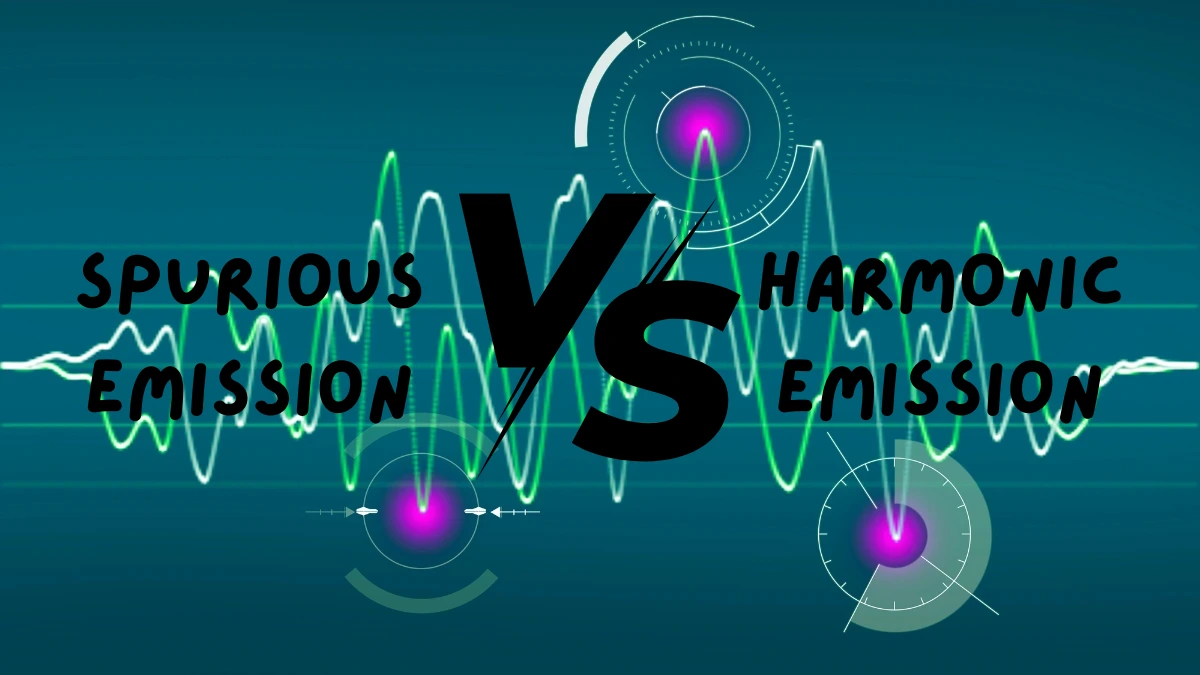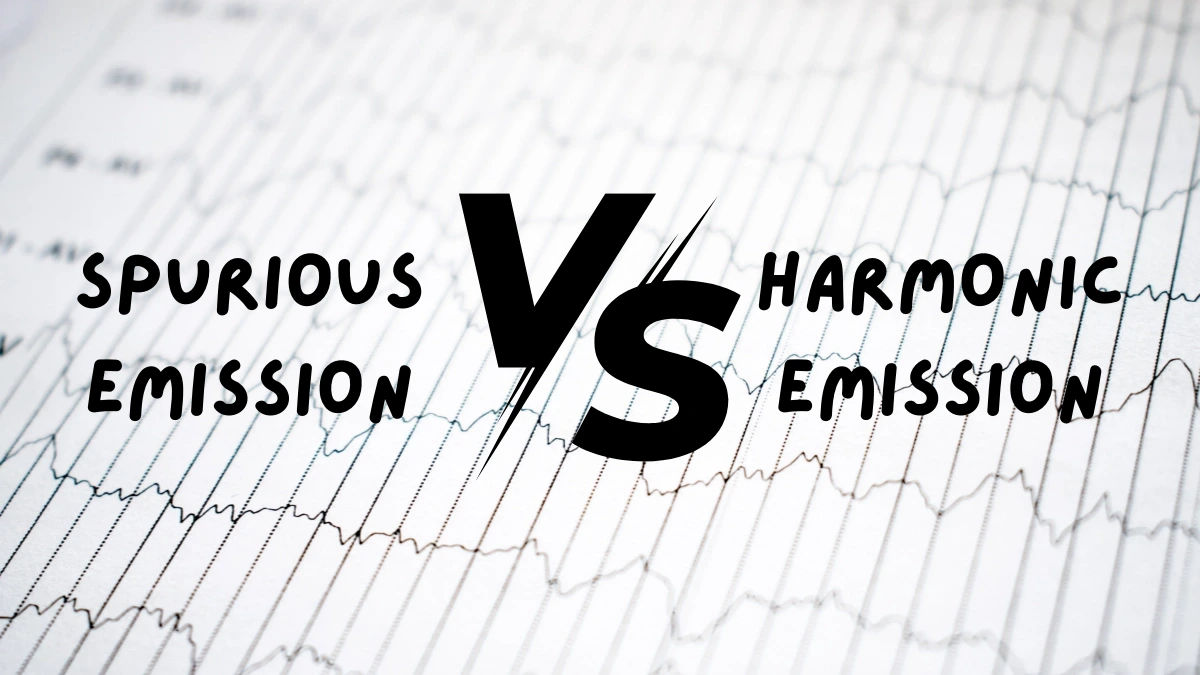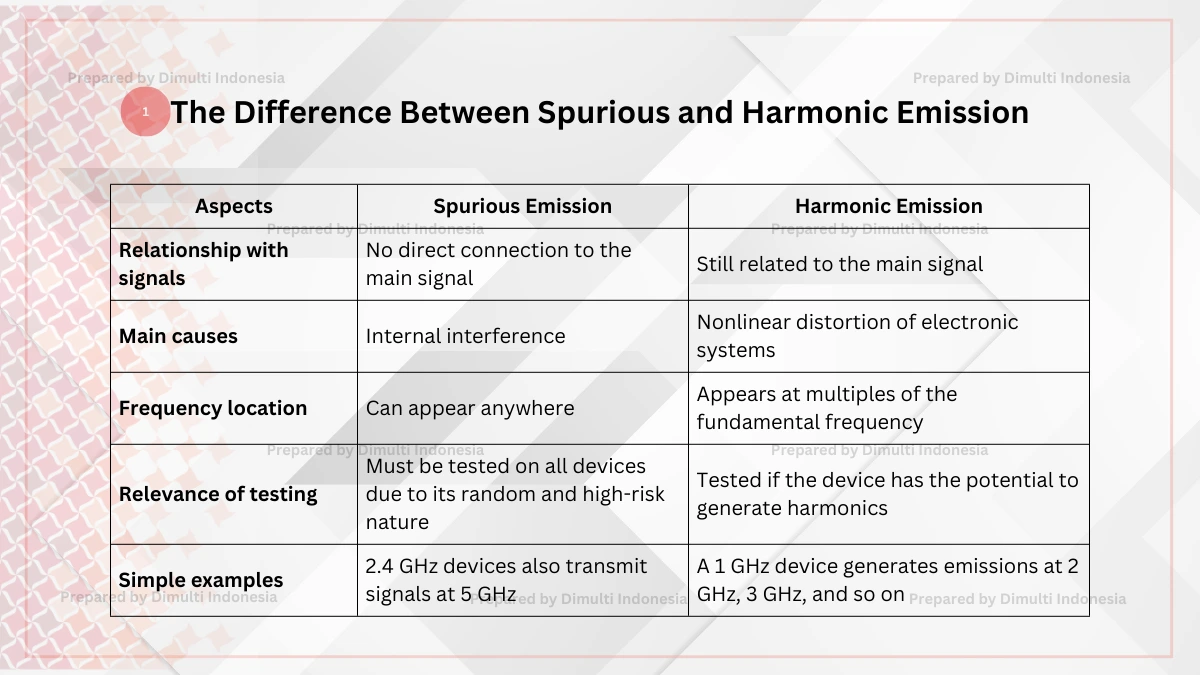Spurious and harmonic emissions are the other frequencies outside the main frequency. Although both are undesired emissions, the digital spurious and harmonic emissions have some significant differences.
The differences between spurious and harmonic emission include relationship with signals, main causes, frequency location, and relevance of testing.
This article will delve into the important differences between spurious and harmonic emission that you need to know why this is important for testing standards and type approval certification.
What is a Spurious Emission?

Radio waves (RF) emitted by an electronic device or communication device have spurious emissions. Spurious emission is a frequency that is outside the main frequency, so its emission is not needed or does not function in the communication process of the main device.
Spurious emission usually occurs due to harmonic, parasitic, or unintentional interference from electronic equipment. Limits on these emissions have been set by governing bodies such as the FCC and ETSI.
Example of spurious emission: An FM radio transmitter is supposed to emit a frequency of 101.5 MHz, but there is also a weak frequency emitted at 202.3 MHz. The so-called spurious emission is the weak frequency at 202.3 MHz.
What is a Harmonic Emission?

Harmonic emission is an additional frequency signal that appears as a result of a non-linear process in an electronic device or transmitter system. These harmonics are usually multiples of the main frequency (fundamental frequency) being used by the device.
Example of harmonic emission: If a device transmits a main signal at a frequency of 100 MHz, harmonic emissions may appear at 200 MHz (2x), 300 MHz (3x), and so on. Although undesirable, these harmonic signals can still appear due to the natural properties of electronic components such as amplifiers or oscillators.
The Difference of Spurious and Harmonic Emission

Spurious and harmonic emissions are both undesired emissions. Here are four differences between spurious and harmonic emission:
Relationship with signals
Spurious emission: No direct connection with the main signal.
Harmonic emission: Still related, because it is a multiple of the main frequency.
Main causes
Spurious emission: Caused by internal interference such as noise, circuit defects, or suboptimal components.
Harmonic emission: Caused by nonlinear distortion of the electronic system, especially in the transmitter.
Frequency location
Spurious emission: Can appear anywhere, even outside the device's operating band.
Harmonic emission: Appears at multiples of the base frequency, for example, 2x or 3x the main frequency.
Relevance of testing
Spurious emission: Must be tested in all devices due to its random nature and high risk.
Harmonic emission: Tested if the device has the potential to generate harmonics.
That's the difference between spurious and harmonic emissions that can interfere with other communication systems, ranging from wireless networks and television broadcasts to aviation navigation systems. That's why all devices that emit signals must be technically tested to ensure that their emissions are still within safe limits.
Often, spurious and harmonic emissions are considered minor disturbances or mere technical issues. In fact, both have a major impact on the smooth running of communications and public safety.
By understanding the difference, you will not only strengthen your technical understanding but also be able to make more informed decisions when designing, selecting, or testing devices to ensure they comply with regulations and are free from frequency interference.